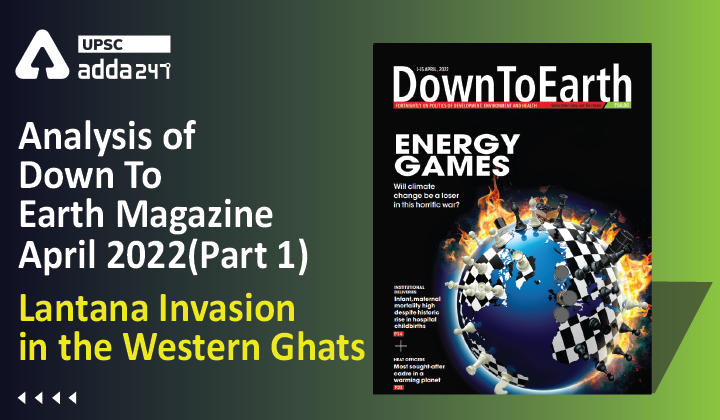Table of Contents
Analysis Of Down To Earth Magazine: ”Lantana Invasion in the Western Ghats”
Relevance
”GS 1: Forest Resources”
”GS 3: Conservation, Government Policies & Interventions”
Context
- In 1997, some 96 per cent of the Western Ghat reserve was under native flora, while 4 per cent was under lantana.
- By 2018, the area under native flora had shrunk to 53 per cent, while lantana occupied 47 per cent of the reserve.
- The tribal community plays a central role in the sustainable and long-term removal of this destructive species.
For example, tribal artisans use lantana as a raw material to create objects of value.
About Soliga Community
- This is a hunter-gatherer community that depends on the forests it inhabits for livelihood, mainly through the collection of non-timber forest produce (NTPF).
- Nowadays they make handicraft items and furniture from a thorny shrub—lantana (Lantana Camara)— that has invaded the forests.
About Lantana Shrub
- Native to South America, Lantana was introduced to India by the British as an ornamental plant in the 1800s.
- It has since taken over 40 per cent of the Western Ghats and continues to grow.
- The proliferation of lantana has led to widespread impacts on the natural environment and, consequently, the people, whose ability to forage NTPFs has been drastically impacted by the species’ spread.
How many invasive species are in the country?
- The “India State of Forest Report 2021”, released in January this year, for the first time provides state-wise data on 29 invasive species in the country.
- It shows that more than 9,793 sq km— an area larger than Sikkim—is under lantana, with Madhya Pradesh being the most infested (2,852 sq km), followed by Karnataka (1,432 sq km) and Tamil Nadu (1,154 sq km).
- The report shows that the spread of lantana is only marginally less than the combined spread of the other 28 species (11,975 sq km).
Conclusion
Though beautiful and unique, the furniture and artwork that the artisans create with Lantana are insufficient in restoring millions of hectares of forests. This underlines the need for approaches that are financially viable, prioritise the needs of communities affected by this weed and work to restore affected fores.



 TSPSC Group 1 Question Paper 2024, Downl...
TSPSC Group 1 Question Paper 2024, Downl...
 TSPSC Group 1 Answer key 2024 Out, Downl...
TSPSC Group 1 Answer key 2024 Out, Downl...
 UPSC Prelims 2024 Question Paper, Downlo...
UPSC Prelims 2024 Question Paper, Downlo...




